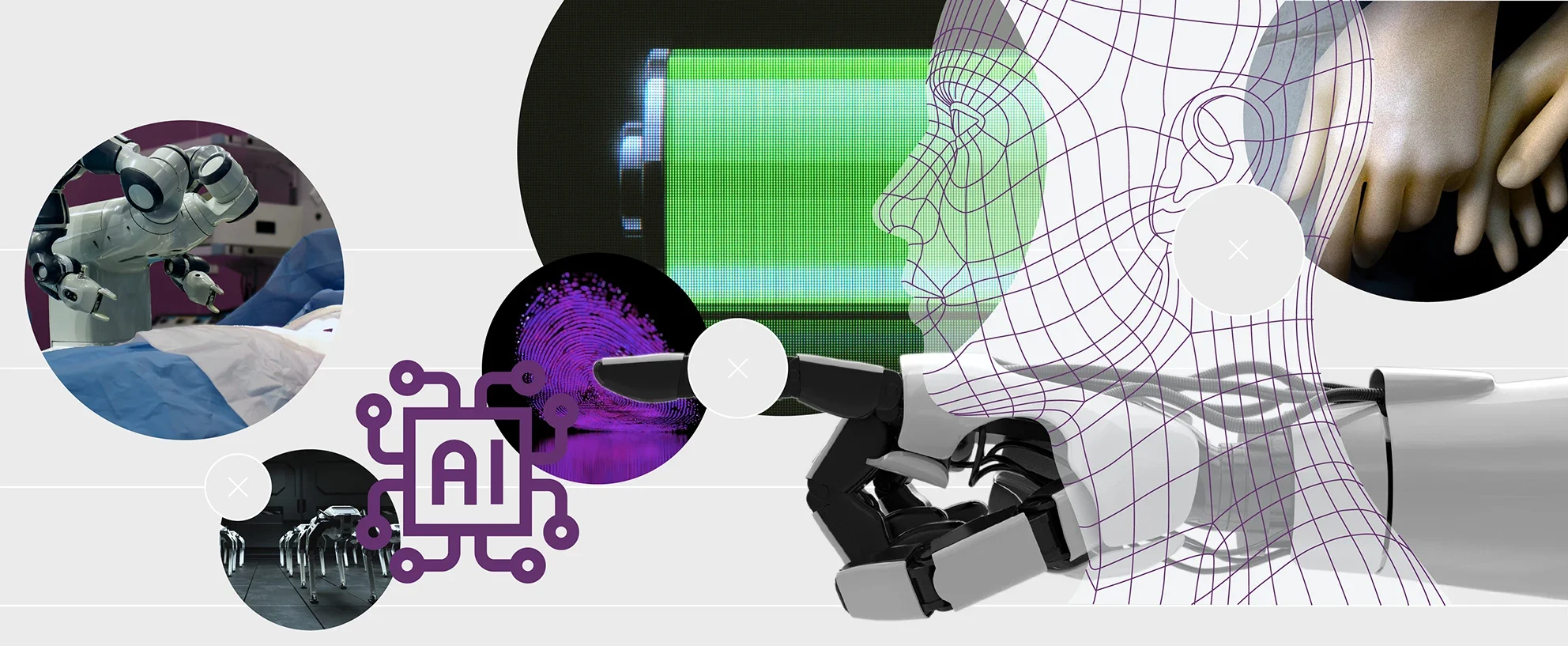Future Horizons:
10-yearhorizon
Humanoid robots take over
25-yearhorizon
Robot bodies evolve
Novel manipulator designs are allowing robots to carry out more delicate tasks than were previously possible.29 But they are still a long way from replicating the dexterity of the human hand. In particular, tactile sensing is still unable to provide the precise feedback crucial for handling soft and delicate objects or operating safely and socially alongside humans.30,31
However, advances are being made, and the latest robotics research platforms now include high-density tactile skins, improved fingertip sensors and biologically inspired cameras.32 The field of soft robotics could also provide solutions, in the form of active materials that can sense and actuate simultaneously.33 In particular, electronic skins that can provide multimodal sensory feedback are advancing rapidly.34,35 Artificial-muscle technology is a promising option,36,37,38 and the ability to rapidly transition between soft and rigid states could make it safer to deploy around humans than conventional hardware.
There are more prosaic concerns, though. Both the computer hardware required to run AI and the mechatronics that enable robots to move are power-hungry, severely limiting run times for mobile robots. Better battery technology and more efficient chips will be crucial before robots can be more widely deployed. Robotic hardware is also expensive, though prices are falling.39 Cheap open-source robotics platforms in particular promise to democratise access to advanced hardware.40
More broadly, there is often a lack of imagination when it comes robotic body plans. Most research is focussed on robotic arms, quadrupeds or humanoid robots, but the technology doesn’t need to be constrained to form factors already found in nature. Evolutionary robotics, which adapts robot designs to specific challenges,41 and robots that can dynamically alter their configuration hold considerable promise.42
Robotic hardware - Anticipation Scores
The Anticipation Potential of a research field is determined by the capacity for impactful action in the present, considering possible future transformative breakthroughs in a field over a 25-year outlook. A field with a high Anticipation Potential, therefore, combines the potential range of future transformative possibilities engendered by a research area with a wide field of opportunities for action in the present. We asked researchers in the field to anticipate:
- The uncertainty related to future science breakthroughs in the field
- The transformative effect anticipated breakthroughs may have on research and society
- The scope for action in the present in relation to anticipated breakthroughs.
This chart represents a summary of their responses to each of these elements, which when combined, provide the Anticipation Potential for the topic. See methodology for more information.



